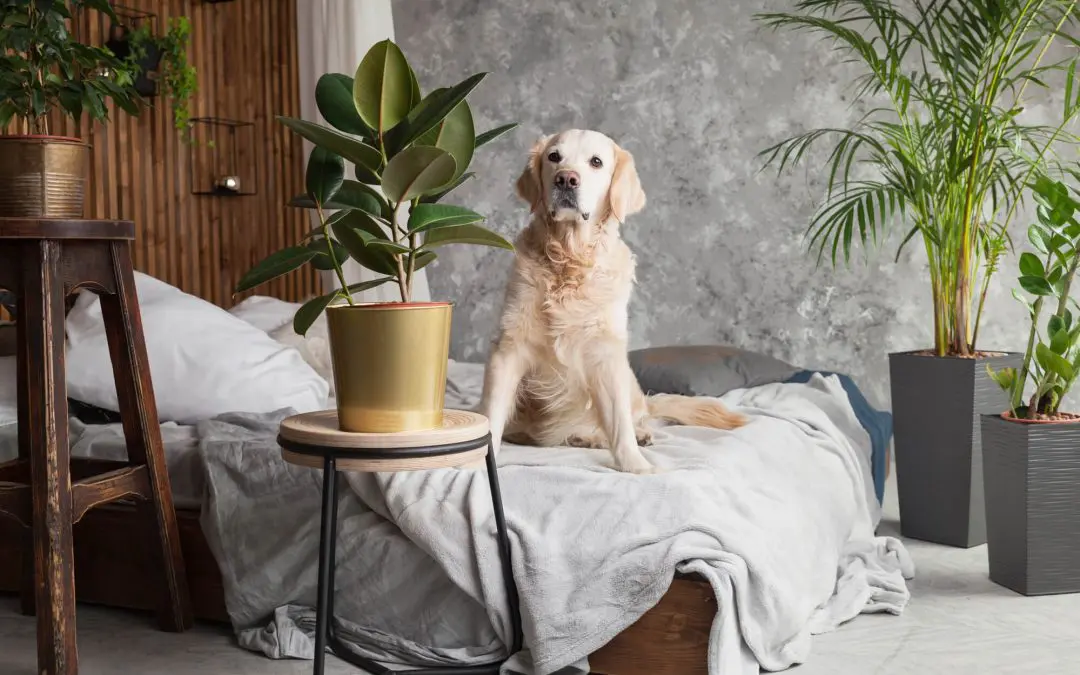Welcoming a pet into your home is a joyous occasion, but it also comes with the responsibility of keeping your home safe and clean. Pet-proofing your home is essential to prevent messes and protect your belongings and pets. Here’s how you can create a pet-friendly environment.
Secure Hazardous Areas Before Pet-Proofing Your Home
Pets are naturally curious and love exploring every nook and cranny of your home. However, some areas can pose serious risks. Start by securing places like the kitchen and bathroom, where cleaning supplies, medications, and other toxic substances are stored. Keep these items in out-of-reach cabinets or use childproof latches to prevent your pet from gaining access.
Another area to consider is your garage or workshop. These spaces often contain tools, chemicals, and small objects that can be hazardous if ingested or played with. Store these items in locked cabinets or high shelves, and always clean up spills immediately.
Protecting Your Furniture and Belongings
Pets, especially young ones, tend to chew, scratch, and mark their territory. To protect your furniture and belongings, provide your pet with appropriate toys and scratching posts. This will help redirect their natural instincts away from your couch or dining room table.
For extra protection, consider using pet-friendly furniture covers or slipcovers that are easy to clean. Leather and microfiber are good choices for pet owners, as these materials are durable and resistant to stains. Keep breakable items out of reach and secure loose wires or cords, which can be tempting for pets to chew on.
Create a Pet-Safe Outdoor Space When Pet-Proofing Your Home
If you have a yard, it’s important to make sure it’s a safe place for your pet to play and explore. Start by inspecting your fencing to ensure there are no gaps or holes that your pet could escape through. If you have a pool, consider installing a safety fence or cover to prevent drownings.
Plants can also be a concern, as some common garden varieties are toxic to pets. Research the plants in your yard and remove or replace any that are harmful. Finally, store lawn chemicals and fertilizers in a secure location, as these can be dangerous if ingested.
Establishing Boundaries Indoors
Setting boundaries inside your home can help keep your pet safe and your belongings intact. Use baby gates or pet barriers to restrict access to certain rooms, such as the nursery or home office. This protects your pet from potential hazards and gives you peace of mind knowing they’re confined to a safe area.
Training your pet to respect boundaries is also key. For example, teaching them to stay off furniture or out of certain rooms can prevent accidents and reduce wear and tear on your home. Positive reinforcement, such as treats and praise, is an effective way to encourage good behavior.
Pet-Proofing Your Home for Comfort and Well-being
While safety is a top priority, it’s also important to make your home comfortable for your pet. Provide them with a designated space, such as a bed or crate, to retreat when they need rest or quiet time.
Consider your pet’s specific needs when pet-proofing. For example, if you have a dog that sheds heavily, invest in a good-quality vacuum cleaner to keep your home clean and reduce allergens. If you have a cat, make sure they have access to a litter box placed in a quiet, private area.
Pet-proofing your home is essential in creating a suitable environment for animals. With a little effort and planning, you can create a pet-friendly and welcoming space for everyone in the household.
FAQs
How can I prevent my pet from chewing on electrical cords?
To prevent your pet from chewing on electrical cords, you can use cord covers or tape cords to the wall. You can also apply a pet-safe bitter spray to deter chewing. Providing plenty of chew toys can help satisfy their need to gnaw.
What are the best materials for pet-friendly flooring?
Pet-friendly flooring materials include tile, vinyl, and laminate, which are durable and easy to clean. Avoid carpet, as it can trap pet hair and stains, making it harder to maintain.
How can I keep my pet from getting into the trash?
To keep your pet out of the trash, use a trash can with a secure lid or place it inside a cabinet. Alternatively, you can use a pet-proof trash can with a locking mechanism. Training your pet to avoid the trash area can also be effective.
What steps can I take to pet-proof my home for a new puppy or kitten?
For a new puppy or kitten, start by removing small objects that could be swallowed, securing electrical cords, and blocking off any small spaces they could get stuck in. When you’re not able to supervise, keep them in a safe, confined area and gradually introduce them to the rest of the home as they learn the rules.
TUFF Home Inspections offers inspection services in New Jersey. If you’re buying or selling a home, contact us to schedule an appointment.

